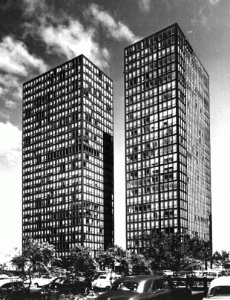
Anyone watching “Ten Buildings that Changed America” last night on PBS was challenged to make their own additions or deletions to the list. I must admit that I was surprised to find Jefferson’s Virginia Capitol rather than his University of Virginia, leading the Top Ten, for it was the university that set the model for the bucolic college campus, which is one of America’s great architectural achievements. But the show convinced me that the Capitol, which established Classicism as the de facto government style, deserves to be included. No one would argue with Trinity Church, the Wainwright, or the Robie House. Albert Kahn’s factories for Henry Ford are an outlier, but every Greatest Hits needs a surprise. Seeing the factories is a reminder of how much more advanced in functionalist design America was compared to Europe (the Bauhauslers greatly admired Kahn’s work), although the Prussian-born Kahn wisely restricted his no-frills style to factories. I’m not sure I would have included Saarinen’s Dulles airport, which jumbo jets rendered obsolete within a decade, and whose goofy mobile lounges had few takers. Dulles never had the national influence of, say, Boston’s South Station (Shepley, Ruttan & Coolidge, 1898). And does the Seagram Building really qualify as a building than changed America? Beloved by architects—though not so much by the public—the Seagram was too expensive to be widely influential. And by the time it was built—1958—the gridded steel-and-glass curtain wall was already in widespread use, thanks to Mies’s pioneering 860 Lake Shore Drive apartments. But then the producers could not have included a lively interview with Phyllis Lambert, which would have been a loss.
